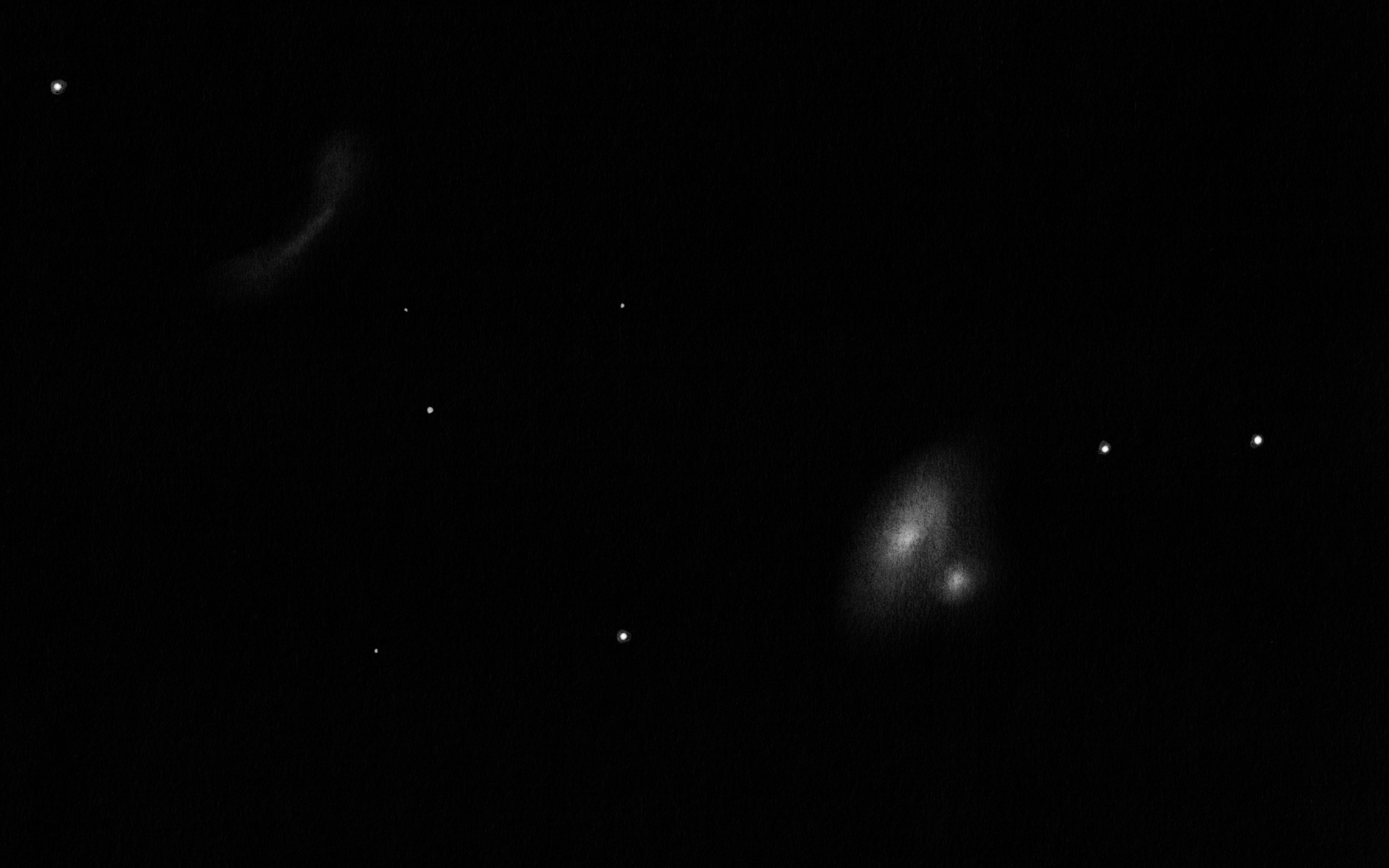Skyguide - Selected objects for every season
The Skyguide is primarily intended to give suggestions for your own observations and will briefly describe selected objects for each season of the year. Both easy and difficult objects will be selected. How difficult an object is depends of course on several factors, especially sky quality, telescope aperture and experience of the observer.
For each object the most important information is given in short form. These are supplemented by photos or sketches. Furthermore, a map, created with the free software Cartes du Ciel (Skychart), is available for a rough orientation. In general, I recommend, to create your own finder charts. The visual description of the object is based mainly on own observations and should serve only as a starting point.
Skyguide 2024-1 (Spring)
Our spring tour takes place in the very conspicuous constellation of Bootes near the border of Corona Borealis and Hercules. With mv = -0m.05, the main star Arcturus is the brightest star in the northern sky and the third brightest star in the entire sky. Despite the size of the constellation, it contains comparatively few bright deep-sky objects, but several beautiful double stars.
We start with the optical ”double star“ Nu1 and Nu2 Bootis. Until 1930, both stars were also listed under the designation Psi1 and Psi2 Herculis by Johann Bayer, as there was no clear definition of the constellation boundaries at that time. These were first defined by the IAU (International Astronomical Union) and are still valid today. Both stars are equally bright at 5m.0. The angular separation is about 10 arcminutes. This means that both stars can also be observed and separated with the naked eye in an urban environment. In binoculars, the color contrast is particularly worth seeing: Nu1 Bootis shines yellowish, Nu2 Bootis rather white-bluish.
Starting from Nu Bootis towards the southeast, we quickly reach our next target. The multiple star STT 298 consists of the 5 components A to E, whereby visually the components A (7m.2), B (8m.4) and C (7m.8) are particularly worthwhile. The pair AB-C with an angular separation of 2 arcminutes is a beautiful object for binoculars. The close pair AB, on the other hand, requires a telescope. The angular separation is currently about 1.1 arcseconds and will decrease to 0.8 arcseconds over the next 10 years. Currently, a telescope with an aperture of 100 mm and steady air should be sufficient to at least recognize STT 298 as a double star. The period of the AB pair is just over 55 years. The motion of this star system can therefore be easily observed with a little patience.
Around the components of STT 298 there are also four galaxies. NGC 5966 (mv = 12m.3) is the brightest galaxy and should still be easy to observe with 150 mm telescope aperture. It is an elliptical galaxy with an active galactic nucleus. An active nucleus emits enormous amounts of radiation. It is assumed to be caused by a supermassive black hole, which is relatively small. Owners of larger telescopes can also reach the barred spiral galaxy IC 4563 (mv = 14m.3), the lenticular galaxy IC 4560 (mv = 15m.7) and the galaxy to the west of NGC 5966.
Back to Nu Bootis we now go in exactly the other direction at about the same distance and find Arp 90 consisting of the spiral galaxy NGC 5929 (mv = 13m.3) with an active nucleus and the barred spiral galaxy NGC 5930 (mv = 12m.2). Both galaxies are interacting. This can be clearly seen in photographs and also visually. In an 8-inch Dobsonian under dark skies, the pair appears more as an oval brightening. The magnification should not be too low. At what aperture is it possible to separate the galaxies visually? Northeast of Arp 90 is the galaxy UGC 9857. With a brightness of mb = 16m.0 and low surface brightness it is a challenge for large telescopes. Dark skies are of course a prerequisite here. Uwe Glahn was able to capture these galaxies very nicely in a sketch.


